Cataloging for School Librarians
Cataloging for School Librarians
Second Edition
Marie Kelsey
Rowman & Littlefield
Lanham Boulder New York London
Published by Rowman & Littlefield
A wholly owned subsidiary of The Rowman & Littlefield Publishing Group, Inc.
4501 Forbes Boulevard, Suite 200, Lanham, Maryland 20706
www.rowman.com
Unit A, Whitacre Mews, 26-34 Stannary Street, London SE11 4AB
Copyright 2018 by The Rowman & Littlefield Publishing Group, Inc.
All rights reserved . No part of this book may be reproduced in any form or by any electronic or mechanical means, including information storage and retrieval systems, without written permission from the publisher, except by a reviewer who may quote passages in a review.
British Library Cataloguing in Publication Information Available
Library of Congress Cataloging-in-Publication Data Available
ISBN: 978-1-5381-0607-5 (cloth : alk. paper) | ISBN: 978-1-5381-0608-2 (pbk : alk. paper) | ISBN: 978-1-5381-0609-9 (electronic)
 The paper used in this publication meets the minimum requirements of American National Standard for Information SciencesPermanence of Paper for Printed Library Materials, ANSI/NISO Z39.48-1992.
The paper used in this publication meets the minimum requirements of American National Standard for Information SciencesPermanence of Paper for Printed Library Materials, ANSI/NISO Z39.48-1992.
Printed in the United States of America
Dedicated to Paul John Stein, PhD
Biochemist, educator, friend, and travel companion
Preface to the Second Edition
It has been four years since the publication of the first edition of Cataloging for School Librarians . At that time, the profession was in transition from the venerable AACR2 to its successor RDA, necessitating a textbook bifurcated in its focus. AACR2 was the books main reference point with RDA in an ancillary position. This new second edition shifts its core to RDA, citing rules and presenting examples of their application. The purpose of this book remains the same as it was for the first edition: to present cataloging rules and processes in a clear, meaningful way for students of librarianship, hopefully alleviating the anxiety that often accompanies the learning curve. Its primary audience is students wishing to become school librarians, but it also fulfills the needs of any beginning library student wanting to understand bibliographic control at its fundamental level. To get the most out of this learning experience, the student must read the text carefully in conjunction with studying the examples presented throughout the book. Relying too heavily on the examples will result in an incomplete and faulty understanding of cataloging fundamentals.
Although it is the usual practice for school librarians to acquire catalog records from book vendors and load them into the schools online catalog, it remains necessary for the librarian to understand the principles and practicalities of constructing bibliographic records. Indiscriminately accepting what is sent to the librarian will lead to a lack of integrity and functionality of the catalog.
The overarching theme is the same as it was for the first edition, that is, resource discovery, or Charles Ammi Cutters first objective for the catalog: a person ought to be able to use the catalog to find a book if the author, title, or subject is known. RDAs purpose and scope statement names find as the first of four named user tasks. In the information age, creating a vehicle to find, or discover, resources has become expedient because there is more to be discovered today than ever before. A credible catalog is a vital means to that discovery.
Organization
Cataloging for School Librarians , second edition, is arranged in four parts with updated material throughout all chapters. Part 1, Essential Information, includes chapters 1 through 4.
Chapter 1, Introducing the Library Catalog and Access to Resources, takes the reader from early book catalogs to record digitization and bibliographic utilities such as OCLC. Influential individuals in the development of cataloging from the nineteenth to the twenty-first centuries are acknowledged. The concept of multiple access points to resources is introduced.
Chapter 2, Supporting Resource Discovery: RDA and FRBR, has been revised and expanded in its presentation of FRBR/WEMI concepts and their relation to RDA. A real-life example of the FRBR models user tasks and application of them to an information-seeking situation illustrates how the highly abstract converts to the concrete. The predominant online catalog interface in use today is discussed in terms of FRBR.
Chapter 3, Obtaining Online Catalog Bibliographic Records, is shorter than it was in the first edition, largely due to the shrinking universe of free bibliographic records. Current options for no-cost and fee-based records are included.
Chapter 4, Understanding Cataloging in Publication (CIP), is revised to focus on the new format, the CIP block, with a detailed explanation of three examples in this format.
Part 2, Descriptive Cataloging, contains chapters 5 through 10.
Chapter 5, Creating Primary and Secondary Access Points, now focuses entirely on RDA while explaining the concept of AACR2s main entry and added entries in current terminology. Creating access points for instances of single author creators, multiple creators, compilations, preferred (uniform) titles, and a small selection of corporate authors is included, as is MARC coding for these examples. RDA rules are cited along with an explanation of how to apply them.
Chapter 6, Creating Authorized Forms of Names, explains the Functional Requirements for Authority Data (FRAD), cites and explains RDA rules relating to authority data for persons, and includes examples of Library of Congress authority records with explanations about their content.
Chapter 7, Creating MARC 21 Records, shows how to code all parts of an RDA record with examples of tags, indicators, fields, and subfields. Public record displays from the screens of four different online catalogs are included to demonstrate that while the MARC coding behind the displays is the same, catalog to catalog, the resulting user displays can be varied in appearance. Web-scale discovery systems are contrasted with the stand-alone online catalog, and BIBFRAME, the potential replacement for MARC, is briefly explained.
Chapter 8, Cataloging Books, is based on RDA and addresses the types of bibliographic situations common to school libraries, such as collaborative works between authors and illustrators, works of nonfiction, compilations of works by multiple authors, a work co-created by more than three authors, a parody, translations, works with parallel titles, and the use of preferred (uniform) titles with literary works. Some of these types are new to this edition. MARC coding is provided, with the new 3XX fields, their codes and abbreviations detailed at a higher level than in the first edition.
Chapter 9, Cataloging Nonprint and Electronic Materials, is based on RDA and includes more formats than were in the first edition of this text. It is the longest chapter in the book and includes an educational DVD, a feature film on DVD, a streaming video, a picture storybook with a CD packaged together as a kit, a young-adult novel on CD and one on a Playaway, two CD compilations of childrens music and the music soundtrack from a movie, two examples of downloadable e-audiobooks, a game, a poster, and a three-dimensional model. Extensive MARC coding is included.
Chapter 10, Cataloging Serials, Books in Series, and Graphic Novels, has undergone expansion and revision. In response to feedback from users of the first edition, an example of a bibliographic record for a magazine is now included. There is a brief discussion of formulaic series suitability for students, and bibliographic examples of both fiction and nonfiction series are presented. Examples of bibliographic options for making perplexing graphic novels in multivolume collections fully accessible are displayed.
Next page
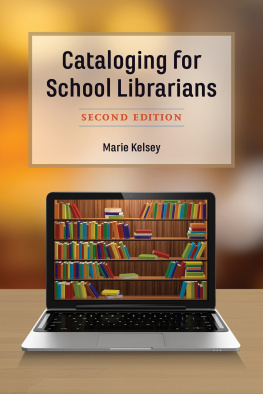
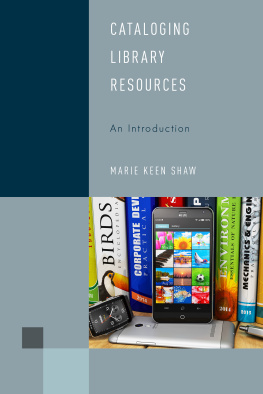

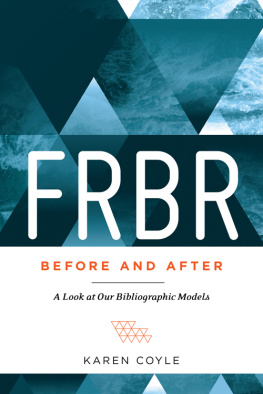
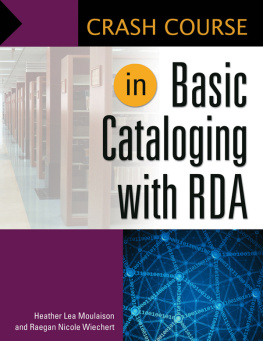
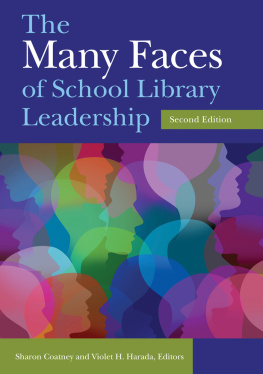
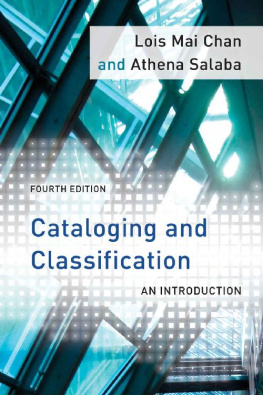
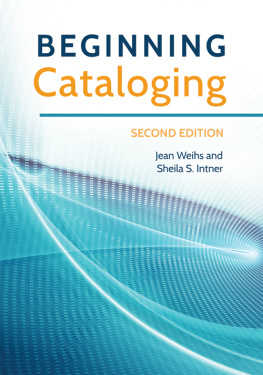
 The paper used in this publication meets the minimum requirements of American National Standard for Information SciencesPermanence of Paper for Printed Library Materials, ANSI/NISO Z39.48-1992.
The paper used in this publication meets the minimum requirements of American National Standard for Information SciencesPermanence of Paper for Printed Library Materials, ANSI/NISO Z39.48-1992.